- Types of anthers and their difference.
- What is an anther and why is it needed.
Anther - from the name it becomes clear that this device must somehow be associated with dust or dirt, and you are not mistaken. The dust boot serves to protect moving parts from dirt getting into them, because, as you know, dirt and sand are an excellent abrasive that reduces the life of the part many times over. In addition, the boot often serves as a container for lubricant and prevents it from leaking out. A great example of this is the CV joint boot angular velocities or ball joints, but more on that later.
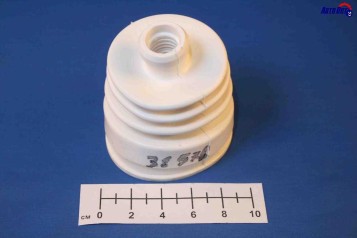
- Types of anthers and their difference.
Anther is most often a rubber product made in the form of a cone, assembled into an accordion. This is done so that the anther is movable, as it is most often installed on moving and critical parts of the car. Rubber anthers are very durable and strong, their big plus is that due to the rubber taken as a basis, the anther is very mobile and can be deformed without harming itself. Vivid examples of such anthers are: the anther of the angular velocity joint, the anther of the steering rack, the anther of the tie rod end and the ball joint. These anthers are constantly subjected to torsional and rupture stresses. Anthers are fastened with clamps or retaining rings. The disadvantages of rubber anthers are that, like any product, they have a service life and, if not used carefully, the anthers are torn, and in the cold they harden and crack from stress.
Plastic and silicone anthers. In fact, these are analogues of rubber anthers made of a different material. Plastic anthers are renowned for their resistance to mechanical damage, and silicone are resistant to large temperature differences.
Metal anthers. Yes, yes, there are some. A prime example such anthers is the anther located on knuckle and protects from dust and dirt wheel bearing already susceptible huge workloads. The metal anther is hammered into the groove between the parts.
- When and why to change anthers.
As I wrote above, the anthers serve to protect against dirt, respectively, if the anther is damaged, it immediately fills with dirt and, mixed with grease, crumbles the bearings and “gnaws out” the cracks, leaving behind a working.
If the anther is damaged and grease comes out from under it, then such anther must be replaced, and a new one filled with grease. In the same way, it is worth doing with a cracked anther, so as not to reap the "fruits" later.
- Replacing anthers with your own hands in a garage.
Five paragraphs earlier, I said that anthers are attached to clamps, retaining rings, or simply clogged. And it would seem that everything is extremely simple, unscrew the clamp and change the boot, but here the main snag awaits. It is not difficult to remove the old boot, because it is enough to cut it, but to put on a new one, you need to release the edge of the part.
Replacing the anther of the CV joint of the angular velocities of the VAZ 2109.
- First you need to unscrew the grenade from the hub. This is done with a 30 head using a small lever.
- We pull out the hub so that the CV joint tears off the slots and crawls out.
- It remains to remove the grenade from the drive.
- We cut the old anther and clean out the old grease, this can be done using diesel fuel or special liquids.
- We put the boot on the axle, lubricate the bearing with grease "for CV joints" and stuff the boot itself with it.
- On one side and the other, we crimp the anther with clamps.
- Install the CV joint in place and fasten the wheel.
On the one hand, many consider this protective case a secondary detail, on the other hand, the masters at the service station first of all check them. After all, if it is torn, then soon wait for the breakdown of this node. Today I want to talk to you about anthers, as an integral part of the front suspension, on many parts of the car. What is it, what is it for, where is it used, of course there will be live photos ...
What is it, definition
Anther - this is a protective case, in the form of an "accordion", which is made of rubber or high-quality silicones. The main task is to increase the service life of the node or device that it protects. It should be noted that the use of anthers increased the resources of many elements not just at times, but dozens of times.
Where applicable
Basically, anthers are installed on the moving elements of the front and rear suspension, for each node they are different and differ structurally, so you can meet on:
- Shock absorbers, many will now say that these are not anthers, but covers, but in fact the function is the same, so you can attribute them here. In fairness, it is worth noting that sometimes there are plastic ones, not rubber ones.
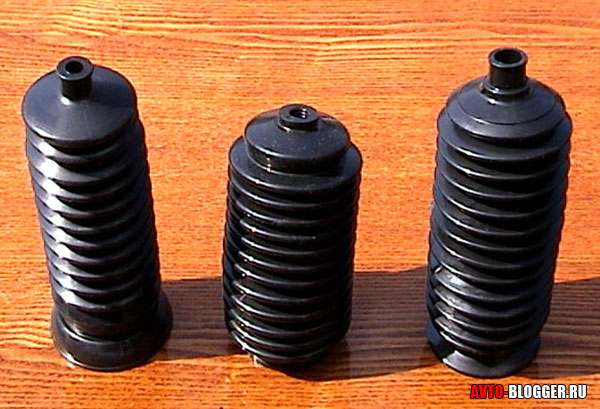
- CV joints. Front grenades are also protected by rubber covers
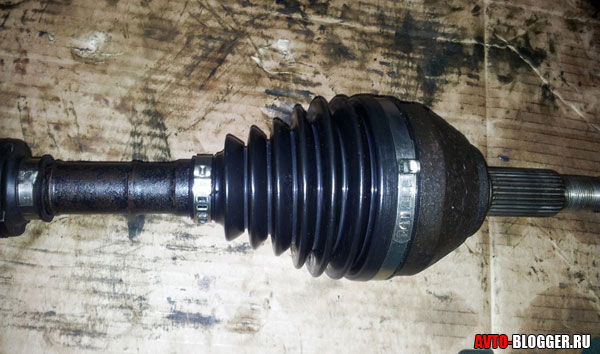
- Steering rack. There are only two here

- Ball joints and steering tips
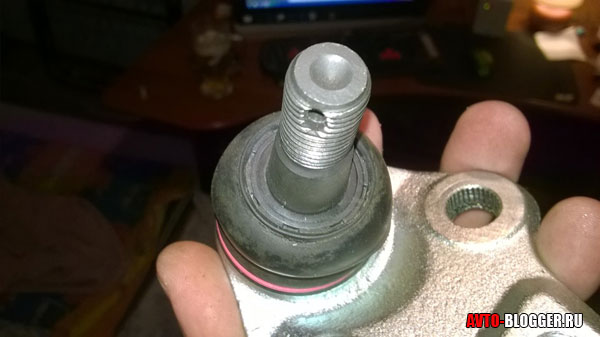
- On the clutch fork ( mechanical box gears)
- Some models of stabilizers
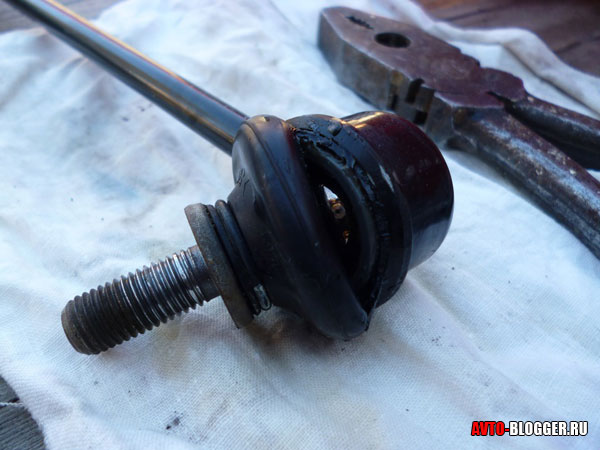
To be honest, in various modifications their car can be quite a lot and different. For example, many automakers protect even door rods in such covers. Somehow I read information that anthers in a car can be about 40 - 60 pieces, but only 10 - 20 perform really important tasks.
main function
As I said above, the main task is to protect the nodes from dirt, dust, and especially sand and moisture. So in front wheel drive CV joints protect especially strongly, steering rack and ball joints.
And why is all this necessary? Everything is simple in these elements there are connections that must work tightly, when moisture or dust gets in, the nodes begin to wear out quickly. So for example, at SHRUS there are spherical elements that go along special grooves, if moisture or sand gets into these grooves, they will quickly wear out. Moisture will oxidize them - which will bring rust, but the sand will work as an abrasive, simply grinding off the grooves and the balls themselves.
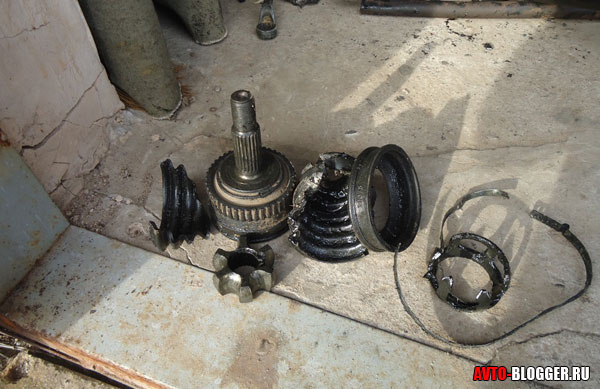
steering rack - has a shaft that passes through guides and seals, it must also be protected by anther, if there is no protection - the shaft begins to rust, sand gets into its "work" places, the seals break and begin to leak. Shaft guides, as a rule, are made of polymers; when the shaft is operated in sand or rust, they also quickly fail.
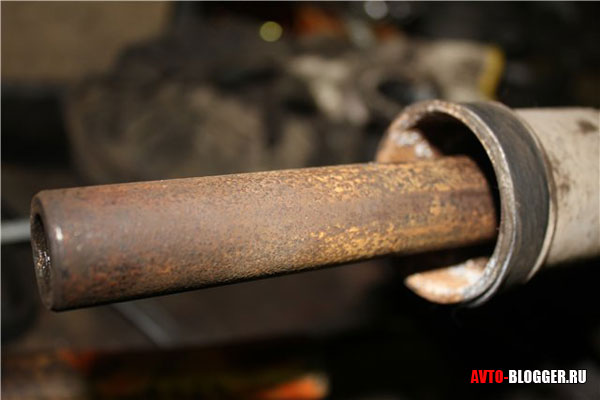
Ball and steering joints , one of the busiest parts. They have a so-called finger in their structure, with a hinged tip and polymer inserts, if sand gets between them, the polymer fails very quickly. Anther is simply necessary here.

And these are only the main elements, all of them must be protected reliably from dust and dirt, otherwise expensive repairs or even an accident spherical bearing with heavy wear, it can simply fall apart, the car wheel will lie on its side, and what if this happens while driving? The consequences can be dire.
Wear resistance
The material that is used in the production of anther must withstand very high loads.
- High temperatures, should not melt or crack at extreme positive temperatures.
- Low temperatures, should not "tan" in frost
- Should have excellent wear resistance, i.e. friction protection
- Breakdown work. Must withstand torsion and fracture
Previously, anthers were made mainly of rubber, but this material was far from perfect, so it could dry out in the summer, and could also tan in the winter. Small cracks or even breaks appeared.
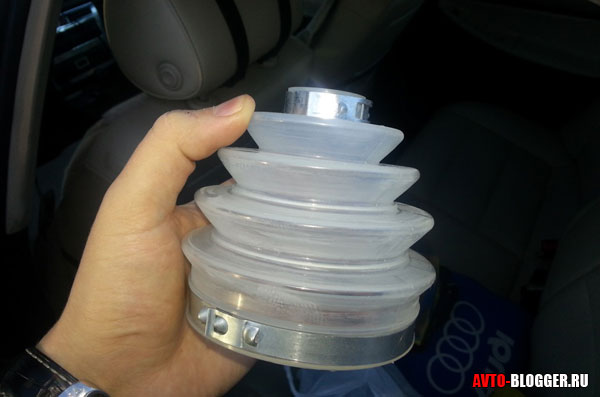
Therefore, then the production technology was slightly changed, now new rubber compounds with improved characteristics are used, or more advanced silicones. In any case, the boot must be very strong to withstand high loads, because its service life is calculated for many thousands of kilometers.
Anther resource
Ideally, this protective cover should last the entire life of the assembly or part it protects. So for the sake of example, it can travel 150,000 kilometers on a steering rack, about 100 - 120 thousand on a CV joint, but about 70 - 100,000 on a ball joint.
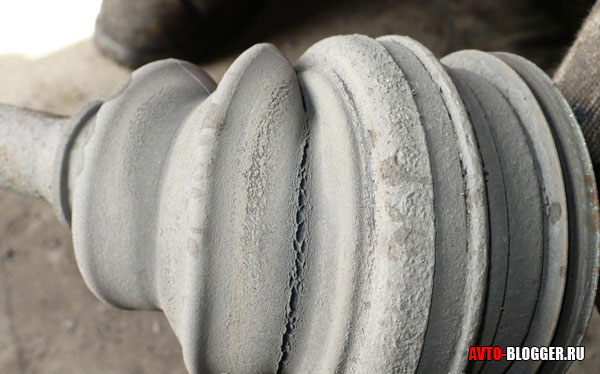
However, with bad pavement, for example - uncleaned roads in winter or concrete, gravel in summer, it can be damaged even with low mileage. For example, my friend managed to damage it during a run of 3000 km, went to the dacha, some kind of rod sticking out of the rubble, he then tore the CV joint boot.
So, ideally, you should close the bottom of the car with metal protection, so indirectly you can increase the resource of “working” anthers.
Is it possible to replace
To be honest, many do not notice these elements at all, and even if they are torn, they continue to ride them, this is not right. After all, a timely replaced anther will greatly extend the life of your node.
Otherwise, 500 - 1000 kilometers will need to be changed! Do you need it? For example, try replacing the steering rack, the price tag is not at all small. YES and SHRUS is not cheap.
Now many may wonder - is it possible to buy a boot separately? YES, of course you can, for example, many dealers have a stock in stock, and even if your warranty has run out, you can find analogues in spare parts stores.
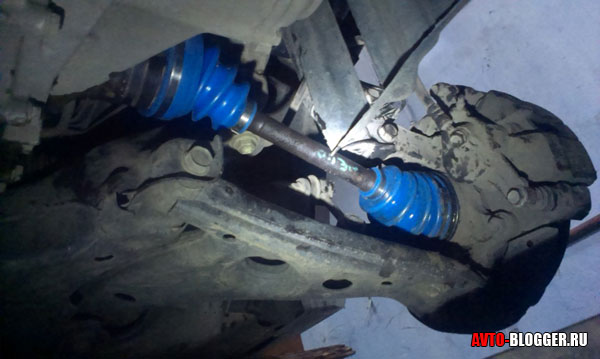
What I want to say in conclusion - GUYS, change these elements at proven stations, because when replacing, you will need to remove (partially or completely) the entire assembly, if you remove it incorrectly, you can damage it. For example, ball and steering tips are easily broken, and a grenade can be damaged.
Here is such a necessary detail, I think the material was useful, read our AUTOBLOG
It is also possible that you need rubber boots have already been manufactured in our production or may even be in the operational warehouse. In this case, it will significantly speed up the time for placing an order and delivering the products or products you need. We have a wide range of products and goods in our operational warehouse - we hope you will be pleasantly surprised.
You may also be interested in other RTI of our production such as:
If you did not find the product you need - contact our managers to clarify the availability of the product. If you want to organize the production of these parts at our enterprise - contact the design department to calculate the cost of tooling - molds.
We produce more than 7,000 thousand types of various rubber products RTI. Here you will find what you are looking for. Download price list above the company logo and in it you can view the entire list of products with prices and which are available, or contact our sales managers for an application or consultation.
Rezinoplast LLC provides services throughout Ukraine and supplies its products to any city in Ukraine, in particular to such cities as Dnepropetrovsk, Kyiv, Zaporozhye, Odessa, Kharkov, Lviv, Kherson, Vinnitsa, Mariupol, Kremenchug, Zhytomyr, Melitopol, Chernihiv, Chernivtsi, Nikolaev, Lutsk, Poltava, Sumy, Volyn, Rivne, Khmelnitsk and many other cities, as well as we supply rubber products of our production to such countries as: Germany, Poland, Belarus, Georgia, Moldova, Azerbaijan, Kazakhstan, Tajikistan, near and far abroad countries and the Baltics. One of the most important goals of the enterprise is the supply of our products to the countries of the European Union.
Greetings to all who read this b / w! :)
There are now in almost any even the smallest auto parts store silicone grease aerosol cans for every taste and budget. About the properties of this universal grease I will not repeat. But it applies, as you read the reviews of the people, this type of lubricant is somehow one-sided. Type anointed rubber seals, mats, sprayed into locks, processed tires. One eccentric even wrote that he splashed the wiper blades with such silicone - he spat that he barely wiped the glass from stains :)) But this is not the question. In any car from below:), and on the Niva there are so many rubber anther covers that protect vital important knots car from moisture, dirt and, accordingly, from rapid wear+ Brake hoses of course.
These rubber bands, and even silicones, require constant attention. Especially relevant in winter period. Freezing mud, ice melting from salt or some other chemicals on the road, or sharp grains of compressed snow-ice off the road wipe or break through the rubber bands that have lost their elasticity in the cold very effectively. And after the end of the winter in the heat, they simply become covered with a network of small cracks and tear ... It’s probably not worth describing how laborious it is to replace the anther of the inner CV joint: ((
Do not know who is like, but I have per rule at the beginning of each winter season
external processing of these responsible rubber products with silicone grease. And for the entire period that the machine I still have more than one rubber band in cold weather, after climbing in the snow it didn’t crack :) I tried different lubricants: RW6085, BBF, WD-40 / only silicon, not legron!/
All with approximately the same result stick to rubber, silicone, plastic. And the price is about the same. Very flattering about silicone grease Hi Gear, But it costs twice as much...
In general, from my experience, I advise you, but it's up to you to decide whether or not to do it :))
Long years of service and many kilometers to your cars!
Sincerely.
Eugene
These are the universal silicone lubricants RW 6085, WD-40 silicone, BBF used in different years.
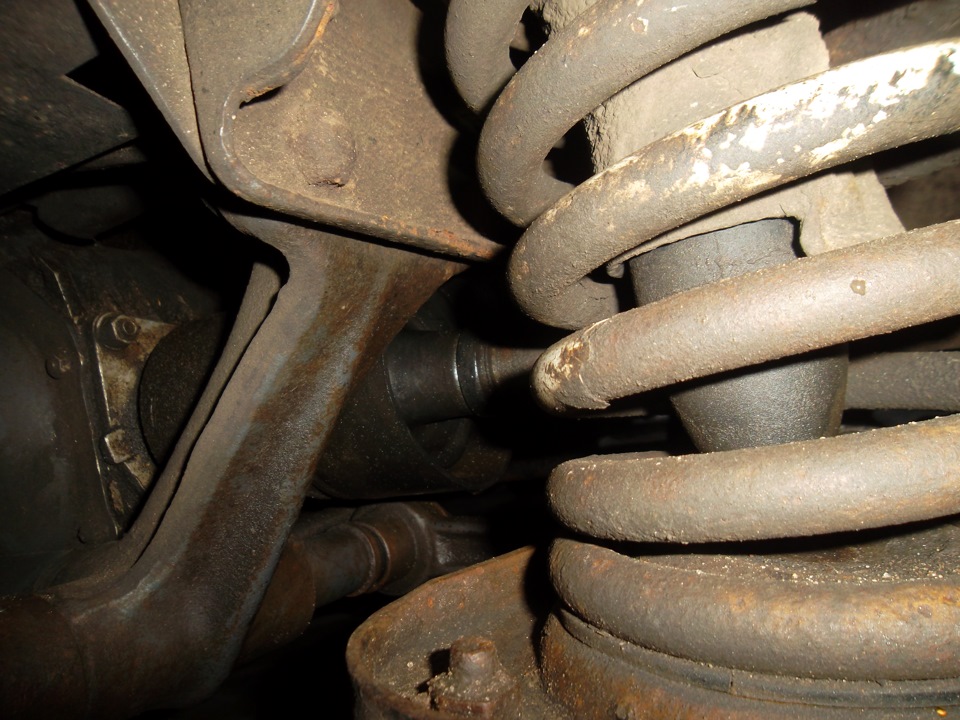
And now after 500 km winter roads. Here is the case of the inner CV joint - elastic, glossy from grease :)
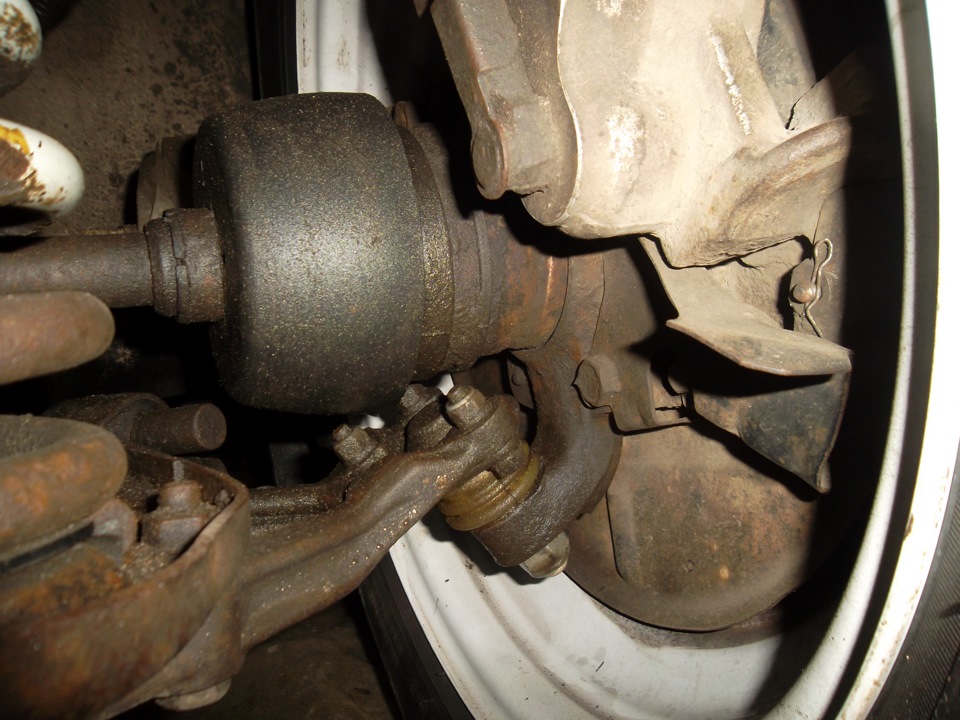
Let me tell you about my experience in repairing the outer CV joint boot in field conditions. Let's first define what a SHRUS is? Hinge of equal angular velocities - this is how this abbreviation stands for. The purpose of this mechanism is to transfer rotational motion from the gearbox to the swivel wheels. It is located on the front drive axle shafts, directly at the front wheel hub. This is a rather important part due to the fact that if one CV joint breaks down, the connection between the drive wheel and the engine breaks; all the torque is wasted, as if one of the drive wheels is suspended above the ground while the other is on the ground. The car is not going anywhere. After that, only a tow truck will help you. SHRUS drive shaft reliable enough and can be used for a long time, if you follow simple rules operation: the hinge must always be in a special thick oil. The ingress of water and sand into the hinge is unacceptable and causes its quick "death". In order to avoid the ingress of sand and water, the CV joint is protected by a rubber corrugated boot. To prolong the life of the CV joint, this cover must be periodically checked for cracks and breaks. Especially often it is worth doing this on older cars, because rubber loses its elasticity over time and begins to crack and tear. It is not difficult to check this - for this you need to unscrew the steering wheel to the extreme right position and inspect the anther of the right wheel, then turn the steering wheel to the extreme left position and inspect the anther of the left wheel. Inspection is even easier if there is a repair pit or lift. What to do if you still find a gap in the anther? The answer is simple - change. But what to do if there is no workshop, no garage, but you need to go urgently and far away?
Preparing for another summer trip from Moscow to the Crimea, I checked my car to rule out trouble along the way. No breakage or damage was found and we set off. Having rolled enough along the Black Sea coast, after three weeks of vacation, it's time to go back. A quick check before the trip internal CV joints revealed a rupture of the left and a crack in the right anthers. For me, this was the worst news. Riding through gravel rural destinations hasn't gone unnoticed. But, this is not the time to be sad, it is necessary to correct the situation at least temporarily - for the period of the road from Simferopol to Moscow. And there it will already be possible to find both the anthers themselves and the time to replace them.
To carry out the operation on this critical unit, the following were collected around the house: a paper cutter, scotch tape, a couple of new plastic garbage bags, an empty (clean) silicone tube, a silicone gun, a strong rope, mittens, a can of lubricant for CV joints and rags... Lots of rags :)
There was no hole at hand. Therefore, putting the car on the handbrake, scoring under rear wheels wheel chocks in the form of bricks, hanging front wheel I jacked it up for insurance right size a stump in case the jack suddenly wants to come off.
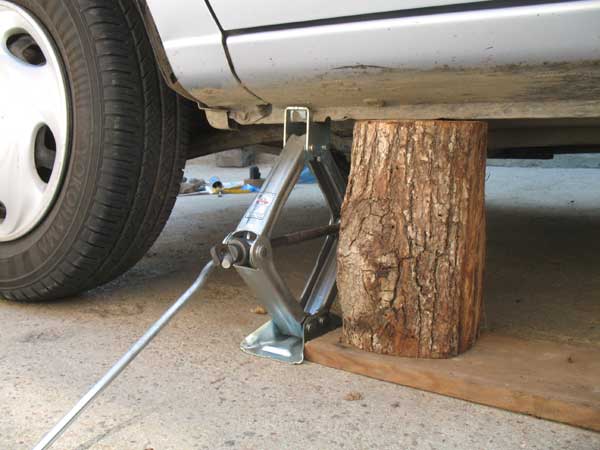
First of all, I removed the remnants of grease with dirt, which was stained with the entire case. To do this, I put a rag on the boot and rotated the wheel with my hands a few turns:
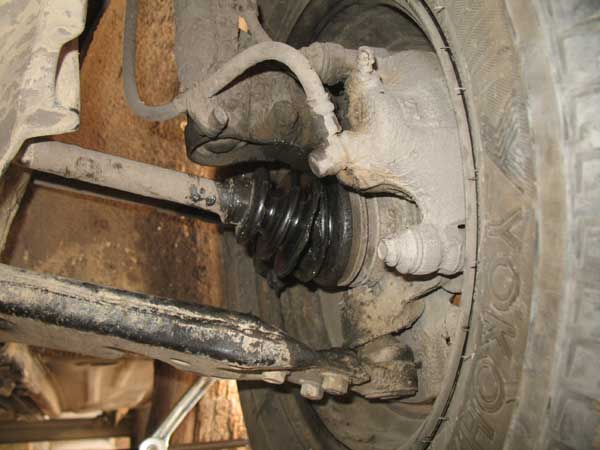
Then, I typed grease for CV joints into an empty silicone tube. Gently "blew" the grease into the remnants of anthers. And so that the grease does not run away again, I took a plastic bag, spread it across the entire width, pressed it into the grooves of the cover with my fingers and scrolled the wheel in the direction of travel. As a result, I got something like this:
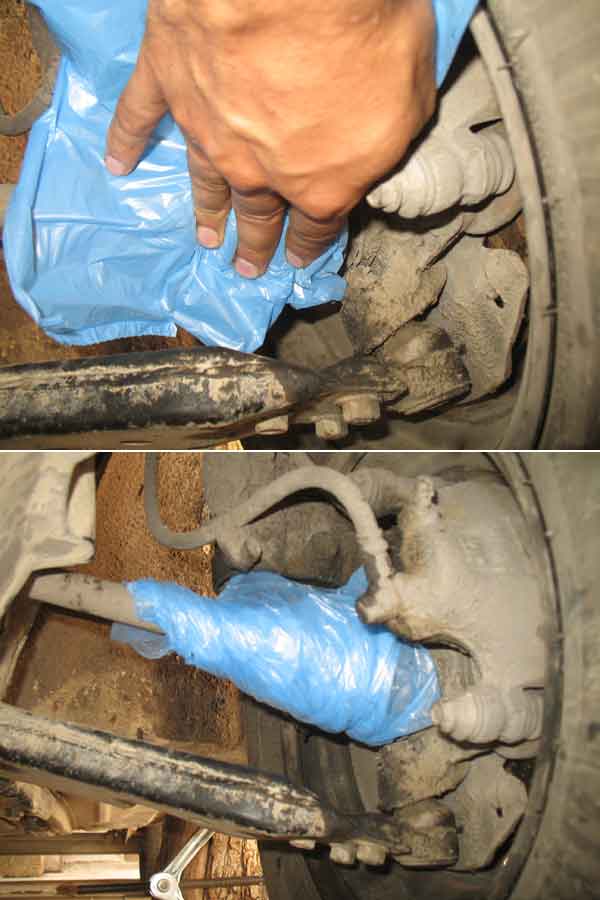
Then, I tied each of the "grooves" of the cover with a rope in order to secure the package and at the same time reduce aerodynamic drag, which can dishevel and tear the package ahead of time.
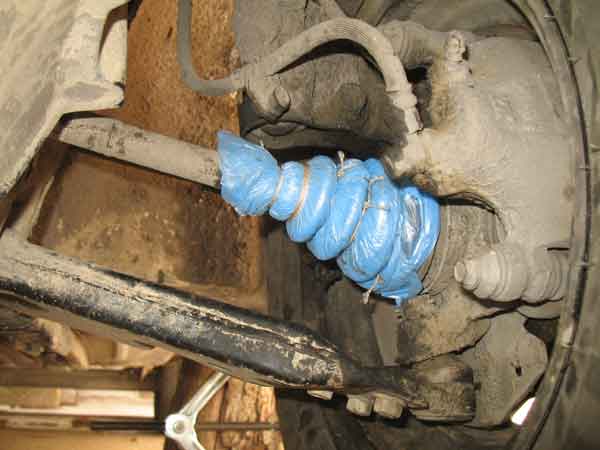
I did a similar operation with the second wheel, with the only difference being that I additionally wrapped it with tape. This was done for an experiment. I wrapped one CV joint with a "regular package", and the second one with "magic tape". I was satisfied with the result of the work:
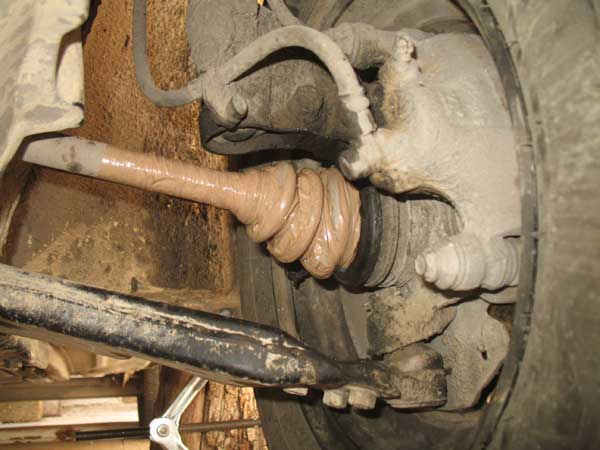
After 1452 kilometers, my "field covers" of my appearance have not changed. That is, they looked like this:
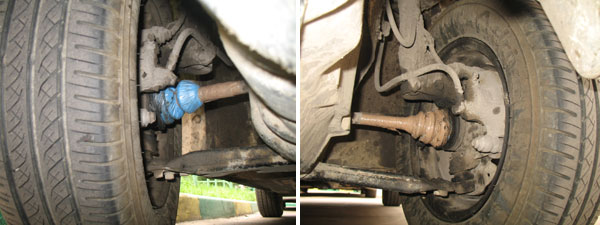
You can safely say that I was not in vain, I didn’t give CV joints an offense.
If things are bad and you suddenly need to evacuate the car, you can find a tow truck that is suitable for the price and location in the tow truck catalog -



